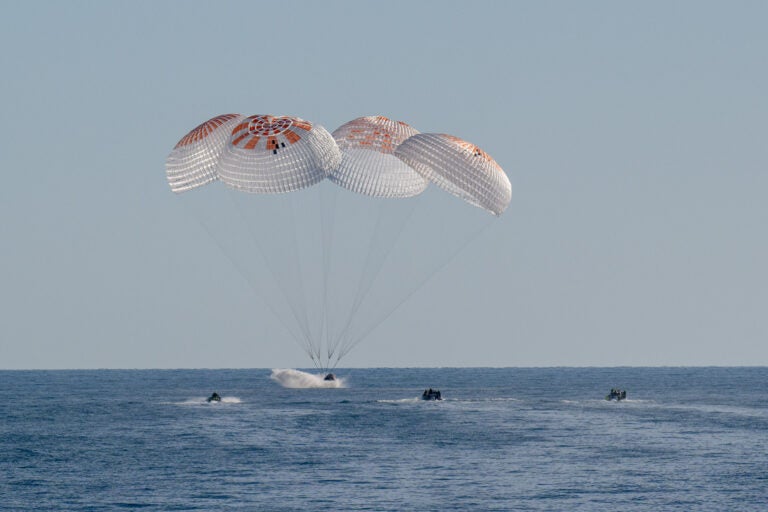The LISA Pathfinder launch coincides almost perfectly with the 100th anniversary of the publication of Albert Einstein’s general theory of relativity — published on 2 December 1915. The theory predicts the existence of gravitational waves, tiny ripples in space-time propagating at the speed of light, which so far have not been directly observed.
LPF will test the entirely new technologies required to observe gravitational waves from space. At its core is a pair of free-floating identical 2-inch (46 mm) gold-platinum cubes separated by 15 inches (38 cm), which will be isolated from all external and internal forces acting on them except one — gravity.
“LISA Pathfinder will put these test masses in the best free-fall ever produced in space and monitor their relative positions to unprecedented precision,” said Karsten Danzmann. “This will lay the foundations for future gravitational-wave observatories in space such as eLISA.”
Liftoff from Kourou
The Vega launcher lifted off at 5:04 CET. About seven minutes later, after separation of the first three stages, the first ignition of Vega’s upper stage propelled LPF into a low orbit, followed by another ignition about one hour and 40 minutes into the flight.
The spacecraft separated from the upper stage at 6:49 CET. Controllers at the European Space Agency’s operations center in Darmstadt, Germany, then established control.
LPF is now in an elliptical orbit, its closest point to Earth at around 125 miles (200 kilometers) and farthest point at around 900 miles (1,500km). On December 6, a series of six thruster burns will commence, which will lift the apogee of the elliptical orbit higher and higher over the next five days.
Towards the Lagrange Point
Finally, LPF will leave orbit around Earth entirely and drift on a transfer orbit towards the so called Lagrangian point L1 — around 900,000 miles (1.5 million km) away from Earth towards the Sun. LPF is expected to reach its operational orbit about 10 weeks after launch on February 13. After final checks, it will begin its six-month scientific mission on March 1.
En route to the final orbit, the two test masses will be released from the locking mechanisms that hold them during launch and cruise. Once in orbit around L1, the final mechanisms will be unlocked and the test masses will no longer be in mechanical contact with the spacecraft.
Precise laser measurements
A laser interferometer will measure the position and orientation of the two test masses relative to the spacecraft and to each other with a precision of approximately 10 picometers (one hundred millionth of a millimeter). The construction of the precise optical measurement system was lead by the Max Planck Institute for Gravitational Physics (Albert Einstein Institute) in Hannover.
“The technology now flying on LISA Pathfinder is the result of more than a decade of scientific and engineering development. It is very rewarding to see the satellite on its way into space,” said Jens Reiche from the Albert Einstein Institute in Hannover.
Data analysis in Hannover
The main scientific mission of LPF begins on March 1, 2016, and will last for at least six months. “The satellite is a complex spaceborn laboratory with which we will conduct several dense series of experiments to measure the near-perfect free fall,” said Martin Hewitson from the Albert Einstein Institute in Hannover. These experiments will determine all non-gravitational parasitic accelerations, identify important sources of disturbances, and further minimize those if necessary.
For more on LISA Pathfinder, see here.










